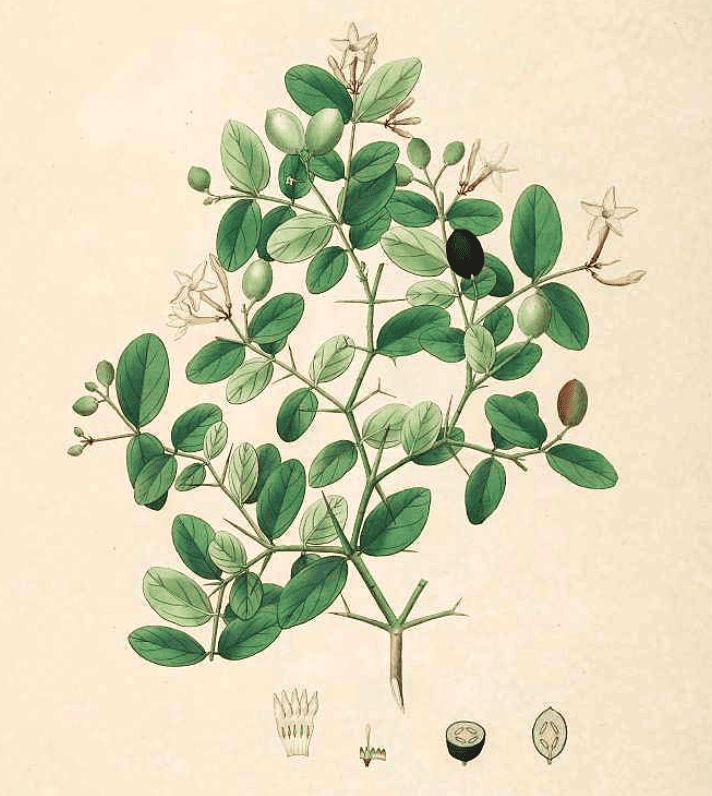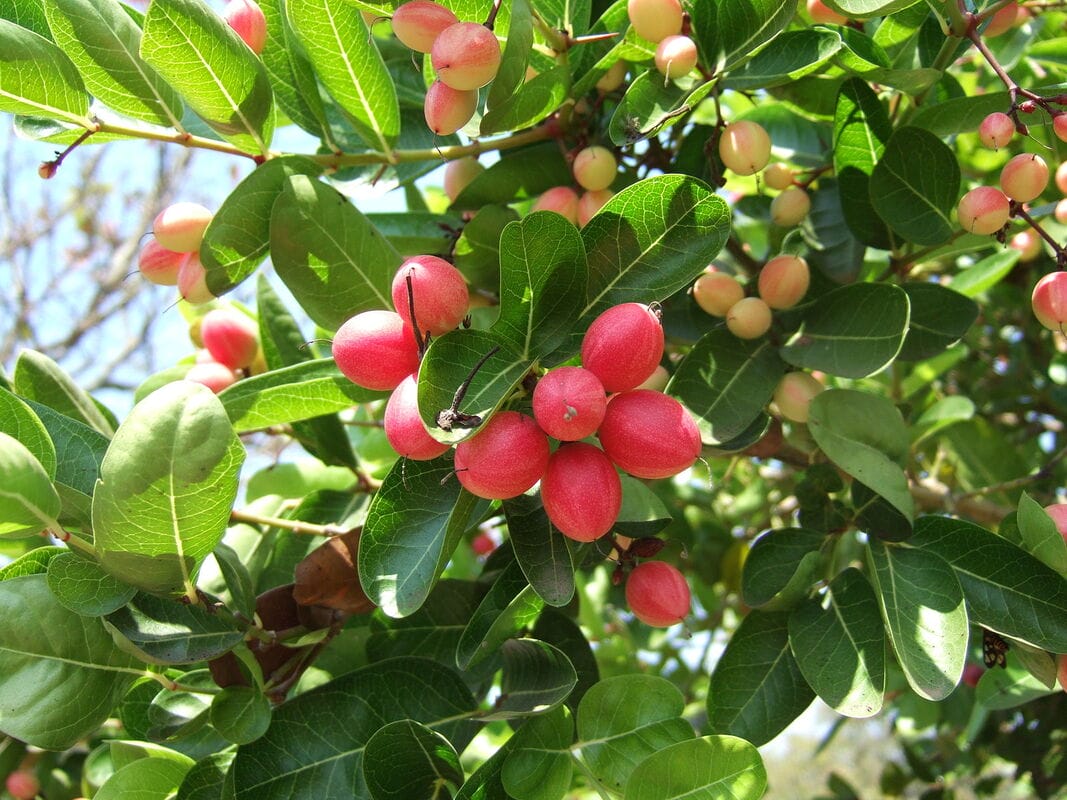Carissa carandas, Karamarda
KarandaKaramarda (Ayurveda)
Kalakkai (Siddha)
Kakronda, Karaunda (Unani)
Laaz (Arabic)
 Carissa carandas
Carissa carandasW. Roxburgh, Plants of the coast of Coromandel, (1795)
 Carissa carandas
Carissa carandas(Photo by Sakurai Midori, cropped) (Wikimedia)
Botanical name:
Carissa carandas
Others reportedly used include Carissa spinarum, C. inermis (Syn. C. macrophylla)
Parts used:
Root; also leaf and fruit
Temperature & Taste:
Cool, dry. Pungent, Bitter (Warm according to Unani)
Fruit is cool and sour when unripe, and cool and sweet when ripe.
Classification:
4c. CARDIAC
Uses:
1. Clears Heat:
-Fever
-skin diseases; pustular eruptions
-Ulcer
2. Benefits the Heart:
-contains Cardiac glycosides
-fruit juice is also taken as a cardiac tonic in doses of 15–20 mls.
3. Promotes Urine, Clears Damp:
-aids slimming in obesity and fluid retention
-difficult Urination
4. Kills Worms:
-Worm infestation
5. Externally:
-applied to Conjunctivitis
-applied to Piles
-root powder was applied to Wounds infected with maggots
-root paste is applied to Diabetic Ulcers
FRUIT:
The Fruit is sweet and eaten as food.
-cooling in Fevers; alleviates Thirst (juice)
-juice is taken to promote appetite and digestion
-used for Scurvy
-Septicemia
-unripe fruit is sour and used for pickles
Dose:
Root in Powder: 1–3 grams
Decoction (1 in 10): 40–50 mls.
Fruit Juice: 10–15 mls.
Correctives:
1. Salt
2. Sugar
3. Black Pepper
Main Combinations:
Major Formulas:
Cautions:
None noted
